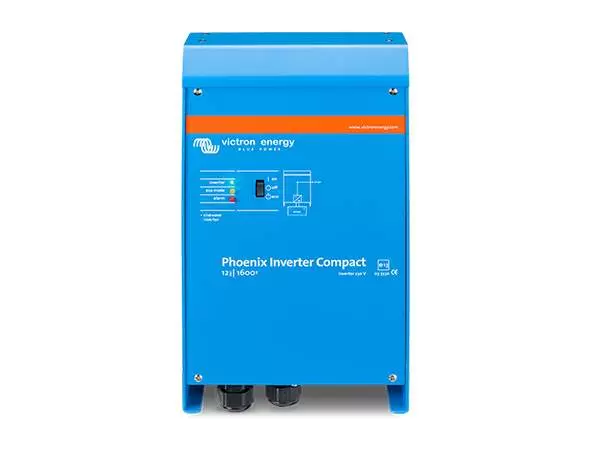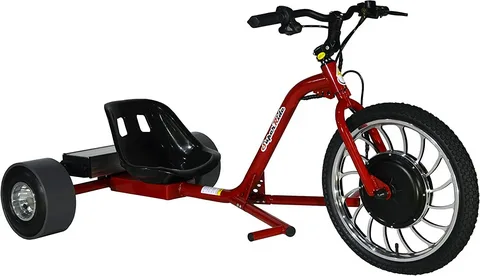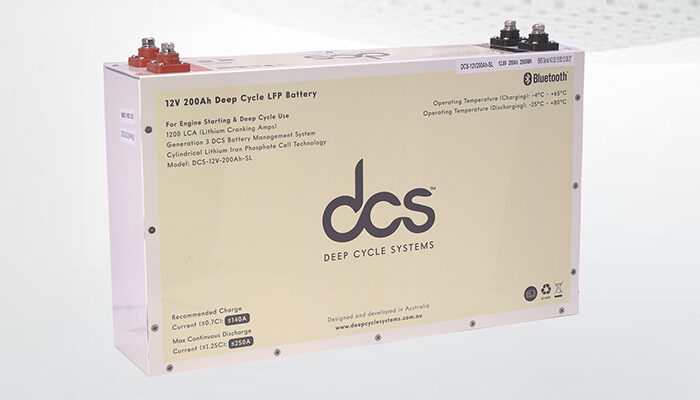Imagine waking up to birds chirping, surrounded by nature, and living off the grid. This lifestyle choice is gaining popularity as more people seek a break from urban hustle and bustle. But with this freedom comes a need for reliable power sources.
Enter the power inverter – an essential component for converting battery-stored energy into usable electricity for your home or RV. Not all inverters are created equal, though. When it comes to off-grid setups, choosing the right one can make all the difference between smooth sailing and electrical headaches.
Let’s dive into why opting for a pure sine inverter is your best bet when setting up your off-grid paradise. From understanding what makes them different from modified sine wave inverters to exploring their specific benefits, we’ve covered everything you need to know before making that crucial investment!
What is a Power Inverter?
A power inverter is an essential device that converts direct current (DC) into alternating current (AC). This process allows you to power everyday appliances and electronics that run on AC. In the off-grid world, where solar panels or batteries provide electricity, inverters bridge the gap between stored energy and usability. Without one, your lights may remain dim, and your devices won’t function.
Different types of inverters exist to suit various needs. The choice often depends on the nature of your setup and what equipment you intend to use. Some are designed for efficiency, while others focus on providing a cleaner output. Understanding how these devices work is crucial in optimizing energy consumption in an off-grid lifestyle. When selected wisely, they can enhance convenience and sustainability in remote living scenarios.
Difference Between Pure Sine Wave & Modified Sine Wave Inverters
Power inverters are crucial in converting DC power from batteries into AC power for household appliances. Pure sine wave and modified sine wave inverters stand out among the different types available. Pure sine wave inverters produce a smooth and consistent electrical waveform. This is similar to the electricity supplied by your utility company. As a result, they are ideal for sensitive electronics like computers and medical devices that require stable power levels.
On the other hand, modified sine wave inverters generate a choppier waveform. While they can still operate most appliances, some may experience noise or reduced efficiency when using this type of inverter. Devices with motors or delicate circuits might not perform optimally with modified versions. Choosing between these two depends on your specific needs and how you plan to use your off-grid setup.
Benefits Of Using A 1500 Watt Pure Sine Wave Inverter
1500 watt pure sine wave inverter offers a range of advantages for off-grid setups. Their clean power output mimics the electricity from your utility grid, making them ideal for sensitive electronics.
- With pure-sine inverters, devices like laptops and medical equipment operate more efficiently. Compared to modified sine wave alternatives, this leads to longer lifespans and reduced risk of damage.
- Moreover, pure-sine inverters provide stable voltage levels. This stability is crucial when running multiple appliances simultaneously. You can enjoy peace of mind knowing your devices receive consistent power.
- Additionally, these inverters often have higher surge capacities. This feature is essential when starting motors or other high-demand equipment without causing interruptions.
Many users appreciate the quiet operation of pure-sine inverters. Unlike some alternatives that emit buzzing sounds, they work silently while delivering reliable energy where it’s needed most.
Things To Consider When Choosing Power Inverter 1500w
Power capacity is crucial when selecting power inverter 1500w for your off-grid setup. Calculate the total wattage of all devices you plan to run simultaneously. This will ensure you choose an inverter that can handle your energy needs without strain.
Next, consider the type of waveform it produces. Pure sine wave inverters offer clean and stable power, which is ideal for sensitive electronics like laptops or medical equipment. In contrast, modified sine wave inverters can cause issues with these devices.
Look at efficiency ratings, too. A higher percentage means less wasted energy during conversion, which translates into savings on battery life and fuel consumption.
Don’t forget about installation requirements and compatibility with your existing system. Some models are easier to install than others.
Check warranty options and customer support services from manufacturers. A solid warranty provides peace of mind and protection for your investment as you embark on off-grid living.
How to Properly Install and Maintain Your Pure-sine inverter?
Installing a pure-sine inverter requires careful planning. Start by selecting a dry, well-ventilated location. Ensure your battery bank and other components are within easy reach.
Before installation, disconnect all power sources to avoid accidents. For wiring, follow the manufacturer’s instructions closely. Use high-quality connectors to secure connections firmly.
Once installed, regular maintenance is key. Check the inverter’s fans and ventilation openings frequently for dust buildup; clean them as needed to ensure optimal airflow.
Monitor performance periodically through any available indicators or gauges. This helps identify potential issues early on.
Keep an eye on the battery health linked to your inverter system. Properly maintaining both will enhance efficiency and longevity, ensuring reliable power when needed.
Pure-sine inverters: Clean Power for Sensitive Electronics
Pure-sine inverters generate power that closely mimics the electricity provided by utility companies. This makes them ideal for sensitive electronics like laptops and gaming consoles. When devices require clean energy, any fluctuations can cause malfunctions or permanent damage. Pure sine wave technology ensures a steady flow of electricity without spikes or drops.
Additionally, these inverters produce less electromagnetic interference (EMI), crucial for audio equipment and medical devices. Sound clarity from high-end speakers improves dramatically when powered by pure-sine inverters. Moreover, many modern appliances have advanced features that depend on smooth power delivery. Using a pure-sine inverter means you won’t be compromising their performance.
Pure Sine vs. Modified Sine Inverters – Which One Is Right for You?
Consider your power needs when deciding between pure sine and modified sine wave inverters. Pure-sine inverters provide smooth, clean electricity. They are ideal for sensitive electronics like laptops or medical equipment. On the other hand, modified sine wave inverters are more budget-friendly. They work well for less demanding devices such as lights and small appliances but may cause issues with some electronics.
A pure-sine inverter is often the safer choice if you’re an off-grid enthusiast using diverse gadgets. It ensures compatibility across various devices without risking damage. Evaluate your lifestyle and energy consumption before making a decision. Think about what you’ll be powering daily—this will guide you to the right option for your setup.
Pure Sine Wave Inverter Buying Guide: What You Need to Know
Understanding your power needs is crucial when shopping for a pure sine wave inverter.
- Start by calculating the total wattage of all devices you plan to run. This will help you choose an inverter with adequate capacity.
- Look for inverters that offer surge capability as well. Many appliances require additional power during startup, so having extra wattage can prevent overloads.
- Check the inverter’s efficiency rating, too. A higher efficiency means less energy loss and more usable power from your battery bank.
- Consider features like safety protections, including over-voltage and short-circuit prevention. These ensure longevity and reliable performance.
Read customer reviews to gauge real-world experiences. They can provide insights into durability and service support that specs might not reveal.
Maximize Efficiency With High-Quality 1500 Watt Power Inverter
When it comes to off-grid living, efficiency is key. High-quality 1500 watt power inverters excel in converting DC power from batteries into AC power for your appliances and electronics. This means you can run everything smoothly without damaging sensitive devices. Investing in a reliable pure-sine inverter ensures you harness maximum energy from your solar panels or battery bank. These inverters minimize energy loss during conversion, offering better performance than their modified counterparts.
Additionally, they provide stable voltage output, reducing wear and tear on your equipment. This extends the lifespan of your devices and enhances overall system reliability. Choosing high-quality models with advanced features like overload protection and temperature regulation helps maintain optimal functioning even under demanding conditions. Prioritizing quality will lead to a more seamless off-grid experience and greater peace of mind as you enjoy life away from traditional power sources.
Get Smooth, Stable Power with a Pure-sine inverter
When powering your off-grid setup, smooth and stable electricity is essential. A pure-sine inverter delivers just that. Unlike modified sine wave inverters, it produces a cleaner waveform that mimics the power from your utility grid. This means appliances operate more efficiently and quietly. Sensitive electronics like laptops, medical devices, or audio equipment thrive on this consistent power source. You won’t face issues such as flickering lights or unexpected shutdowns.
Another advantage is reduced wear and tear on your devices. With less electrical noise and distortion, you extend the lifespan of everything connected to your system. Choosing a pure-sine inverter ensures you’re investing in reliability. Enjoy peace of mind, whether for long-term living or temporary adventures, knowing you have quality energy at your fingertips.
Essential Features to Look for in a Pure Sine Wave Inverter
Power output is crucial when choosing a pure sine wave inverter. Assess your energy needs to ensure the inverter can handle the load of all devices you plan to use.
Look for units with multiple outlet options. This flexibility allows you to connect various appliances at once without hassle.
Efficiency ratings matter, too. Higher efficiency means less wasted energy and longer battery life, essential for off-grid setups.
Consider safety features like overload protection and short circuit prevention. These safeguards protect both your devices and the inverter itself from damage.
A user-friendly interface enhances convenience. Easy-to-read displays help monitor performance and battery levels effectively.
Check for warranty offers. A solid warranty indicates the manufacturer’s confidence in the product’s durability and reliability over time.
Conclusion
You can enjoy clean power that protects sensitive electronics with the right pure sine inverter. This level of care extends the lifespan of your appliances while reducing the risk of damage. Investing in a quality pure-sine inverter is more than a decision; it’s an essential step toward sustainable living. Each choice creates a reliable and efficient energy system tailored to your needs. Explore options carefully, weigh their features, and consider what suits your lifestyle best. Your journey into off-grid living deserves nothing less than optimal performance from every component you choose.
FAQs
What is the primary difference between pure sine and modified sine wave inverters?
Pure sine wave inverters produce cleaner, more stable electricity. They’re ideal for sensitive electronics like laptops and medical devices. Modified sine wave inverters can power simple appliances but may cause issues with more complex equipment.
How do I determine the correct size pure sine inverter for my needs?
Look at the total wattage of all devices you plan to use simultaneously. Choosing an inverter that can handle this load comfortably while providing some headroom for unexpected surges is wise.
How often should I maintain my pure-sine inverter?
Regular maintenance involves checking connections, cleaning dust from vents, and monitoring battery health if applicable. Keeping everything clean and ensuring proper ventilation will enhance performance and longevity. Choosing the right equipment contributes significantly to enjoying a smooth, off-grid living experience. By opting for a quality pure-sine inverter, you’re investing in efficiency and peace of mind when it comes to powering your essential devices safely and effectively.
| Related Business Listings |
| Contact Directory |
| Local Business Profiles |




